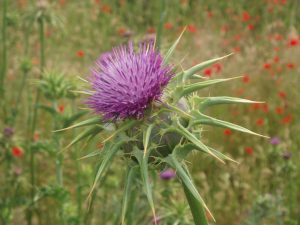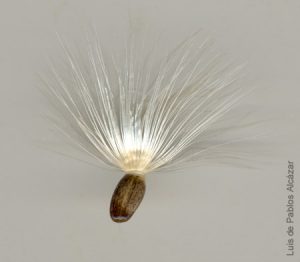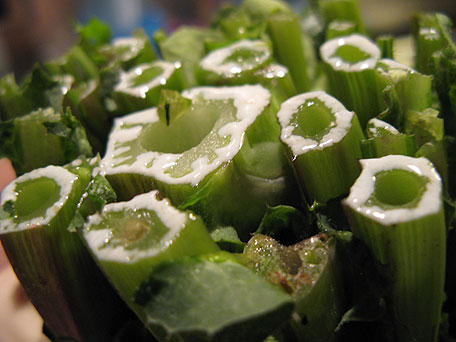Milk Thistle
(Silybum marianum)
- Alias names for Milk Thistle: Carduus marianus, Silybum marianum, Family: Compositae/Asteraceae, Blessed thistle, Mary Thistle, Silymarin, Holy thistle, Marythistle, St. Mary’s thistle, Marian thistle
- Chinese Name for Milk Thistle: None found
Pictures of Milk Thistle: Photos of Milk Thistle Flowers, Seed, Plant and Milk (sap)
References for Milk Thistle pictures:
- Milk Thistle Flower: https://www.christopherhobbs.com/website/art/art_herbal/herbs_images/milk_thistle.jpg
- Milk Thistle Seeds: https://www.frontiercoop.com/picts/bulk/MilkThistle.jpg
- Milk Thistle Leaves: https://www.flickr.com/photos/arastradero2008/2197596479/
- Milk Thistle Milk from cut plant: https://www.treatment-skincare.com/Images/September07/Milk-Thistle-Cut.jpg
- Milk Thistle Plant: https://www.flickr.com/photos/mattmccarthy/2599440621/
About Milk Thistle: Milk Thistle is a biennial plant that grows naturally throughout Europe and has been naturalized in California and Australia. Also known as Mary Thistle, it is a spiny plant that grows up to 5 feet tall and has veined leaves and purple flowered heads. The white markings on the leaves are very distinct and are said to be caused by the Virgin Mary’s milk, hence its name. It is self-seeding and prefers sunny locations, usually found along roadsides. Milk Thistle has been used medicinally for more than 2000 years. The plant is listed as a weed in some countries. The attractive flowers and stems are grown for ornamental purposes. The stems may be removed to prolong its attractive appearance.
Actions and Uses of Milk Thistle:
- Alcohol abuse
- Alzheimer’s disease
- Antidepressant
- Cirrhosis of liver
- Depression
- Diabetes
- Gall stones
- Hepatitis
- Increases breast milk production
- Jaundice
- Pleurisy
- Poisoning antidote (my mentor has successfully used it for mushroom poisoning)
- Psoriasis
- Schizophrenia
How Milk Thistle is used and How it Works:
Milk Thistle blocks the entrance of harmful toxins to the liver and removes them from liver cells. Rumor has it that Silymarin also helps to regenerate injured liver cells.
- Capsules of seeds
- Decoction of seeds
- Herbal extract
- Leaves may be eaten as a vegetable either raw or cooked
- Tincture of seeds
- Tonic made from boiling and eating flower heads
Parts of the Milk Thistle plant used: seeds, dried flower head, fresh flower head, leaves
Properties of Milk Thistle: Antihermorragic, anti-inflammatory, antioxidant, antispasmodic, appetite stimulant, balances female hormones (estrogens), bitter, demulcent, depurative, diuretic, diuretic, febrifuge, galactogogue, protects the liver, relaxes spasms, relieves menstrual pains, stimulates bile flow, tonic that regenerates liver cells.
Chemical Constituents of Milk Thistle: Flavonolignan complex “silymarin” (incl. silybin, silydianin, silychristin); bioflavonoid complex known as silymarin; flavonoids, including quercitin, kaempferol; fixed oil, including linoleic acid, oleic acid; other: betaine, bitter, polyacetylenes, stigmasterol, sitosterol, mucilages; vitamins C, E and K.
Contradictions, safety issues, concerns, harmful drug interactions and allergy precautions for Milk Thistle: Milk Thistle, for the most part, does not have any side effects. It can be used by anyone, even lactating or pregnant females. It may have a mild laxative effect of some individuals which usually ends in 2-3 days.
Helpful Links and References for Milk Thistle:
- https://www.pccnaturalmarkets.com/health/2130007/
- https://en.wikipedia.org/wiki/Silybum_marianum
- https://www.nwcb.wa.gov/weed_info/Silybum_marianum.html
- https://www.proliberty.com/observer/20070305.htm
- https://www.anagen.net/milkin.htm
- https://home.caregroup.org/clinical/altmed/interactions/Herbs/Silybum_marianu.htm
These products are not drugs, but foods for special dietary use pursuant to applicable Federal law. No statement in this page shall be construed as offering these products for the diagnosis, cure, mitigation, treatment, or prevention of any disease.
Related Pages:



